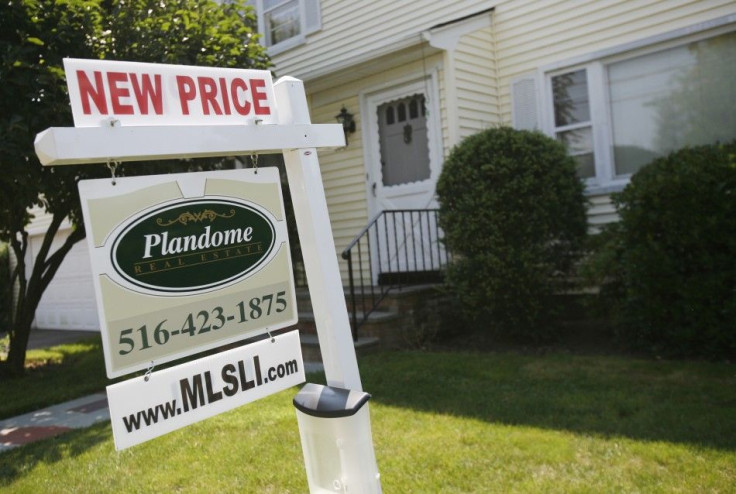Home Sales: 5 Tips for Prospective U.S. Home Sellers
ANALYSIS

To say that prospective home sellers are facing stiff hurdles these days as they try to sell their homes, would not be a stretch.
The U.S. economy, the largest economy in the world, is growing at an acceptably lower rate. including a 1.0 percent rate in the second quarter, and an even more microscopic 0.6 percent rate in the first quarter. Further, the U.S. unemployment rate is high, at 9.1 percent, and it appears job growth has slowed: the major period of lay-offs appears to be over, but large company and small company hiring has not resumed en masse -- delay progress on unemployment. And, of course, the Democrats and Republicans in Washington, although they reached an eleventh-hour agreement on the U.S. debt deal -- apparently are set to do partisan battle again over a possible jobs package.
Against that backdrop, it's no wonder that houses aren't selling at a robust rate. The National Association of Realtors reported that July U.S. existing home sales unexpectedly fell 0.8% to a seasonally-adjusted annual rate of 4.67 million units, down from June's 4.84-million-unit rate..
Equally significant, home inventories rose to a huge 9.4-month supply in July at the current sales pace, up from June's 9.2-month supply. A healthy housing market typically has a 3-5 month supply of existing homes. Further, the median U.S. price of a single-family homes was $174,500 in July, down 4.5 percent from a year ago.
The new homes market's stats are almost as stark: a 298,000-unit sales pace in July, down 0.7 percent from June, a 6.6-month supply of news home in July, and a median sales price of $222,000, up 4.6 percent from a year ago.
The data represent sobering, you-can't-gloss-it-over, tell-tale stats. Still, are there any ways U.S. home sellers can increase the likelihood of selling their home in what amounts to a buyer's market?
Indeed there are, and listed below are 5 tips that should better-position your home for a sale.
1 Add Incentives - In this market, it's all about distinguishing your home from the pack, in a good-kind-of-way.
You have a 3-bedroom $600,000 home in suburban Boston? Consider throwing in 4 choice box seats to two Boston Red Sox games at Fenway Park or a night or two at the Boston Pops. Another option: 5 dinners-for-two at any of Boston's many, superior restaurants.
You'd be amazed at how many potential buyers will attend your open house, just due to the incentives.
2 Enhanced Marketing - If you haven't already, now is the time to get acquainted with online social networks, especially Facebook. Those over age 40 generally are not as social-media savvy as the younger crowd, so have your teen/college age son or daughter set it up, if that's possible. The social media presence will enhance your real estate agent's marketing operation.
3 Self-finance - This obviously is not an option for all home sellers, but consider floating a note -- i.e. being willing to issue a short-term loan at a reduced interest rate to the buyer, for a 3-year or 5-year period. The loan should specify that if the buyer fails to qualify for a conventional, fixed-rate mortgage at the end of the note or otherwise defaults, you re-take possession of the home.
Mortgage rates are low, averaging about 4.18 percent for a 30-year, fixed rate mortgage, but if you take a note for 3% or 2.5% for 5 years, you'll make more prospective home buyers eligible to buy your home.
4 Lease It - Again, for some home sellers, this is not practical, but if you can, consider leasing the home for 1 year or longer. The advantage is obvious enough: leasing extends your home sales window, and when the lease expires, U.S. housing market conditions may have improved. Some sellers are leasing their home for even less than their monthly mortgage payment: in the long run, if home sales rebound, they should recoup their month-to-month loss.
5 Lower the Price - Obviously consult your realtor -- and an experienced attorney who knows your local real estate market -- before considering this step. But be careful: lowering your price signals additional market softness to prospective home buyers, who may wait even more, to get a better deal.
In other words, buyers don't tend to buy when prices are dropping: when they drop, they tend to wait to see if prices will decline more. The uptick in buyers occurs when home prices start rising, as buyers then sense a price bottom may have formed, and conclude that buying now may save them money on the home transaction.
Housing Analysis: There's no way to sugar-coat -- the U.S. housing market, with a few local exceptions, remains a decidedly buyer's market, and it will take at least four quarters -- and probably longer -- for home sales to rise enough to give some leverage back to home sellers.
But if you offer incentives, social market, consider offering a short-term loan, or decide to lease your home, all other factors being equal, you'll better-position yourself in today's challenging U.S. housing market.
© Copyright IBTimes 2024. All rights reserved.





















